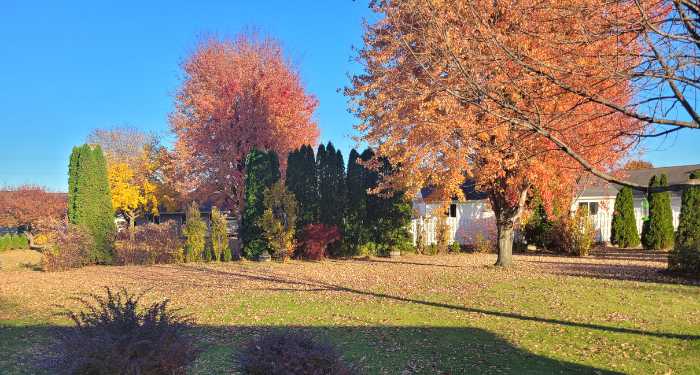Fall Composting Guide: How to Prepare Your Garden for Spring
Posted August 25, 2023
As September rolls in and the days start getting shorter, it’s clear that fall is on its way, signaling an important time for gardeners. Fall isn’t just about harvesting the last of your summer crops; it’s also about preparing your garden for the next planting season. One of the most effective ways to ensure a vibrant spring garden is through fall composting. With the GEOBIN® Composter, getting started or leveling up your fall composting game has never been easier.
Why is Fall the Best Time to Compost?
Fall composting might just be the best-kept gardening secret. As trees shed their leaves, you’re presented with a bounty of brown, carbon-rich materials perfect for the compost pile. When mixed with the green waste from your yard and kitchen, such as grass clippings and vegetable scraps, you create a balanced fall compost blend that breaks down efficiently over the cooler months.
Top Benefits of Fall Composting for Your Garden
- Natural Mulch Source: Fall compost acts as a natural mulch, protecting your soil from harsh winter conditions and retaining its moisture.
- Rich Soil Enhancer: As the compost breaks down, it enriches the soil with essential nutrients, ensuring it’s ready for spring planting.
- Waste Reduction: Composting allows you to recycle organic waste, promoting sustainable living and reducing your carbon footprint.
Getting Started with the GEOBIN® Composter
If you’re new to composting or just looking for an efficient upgrade, the GEOBIN® Composter is your fall garden companion. Its user-friendly design allows for optimal airflow, speeding up the decomposition process. Whether you’re adding dry leaves, plant cuttings, or kitchen waste, this composter can handle it all.
5 Essential Steps for Successful Fall Composting
- Collect Brown Waste: Gather fallen leaves, dried twigs, and even shredded newspaper. These are carbon-rich and provide the “brown” component of your compost.
- Add Green Waste: Include vegetable scraps, grass clippings, and plant cuttings. These nitrogen-rich components are your compost’s “green” layer.
- Layer Brown and Green Material: When adding organic waste to your GEOBIN Composter, alternate between green and brown layers. A good rule of thumb is 3 parts brown to 1 part green.
- Maintain Moisture and Airflow: Ensure the compost stays as damp as a wrung-out sponge. Turn the pile once a week to introduce air, which aids decomposition.
- Watch the Magic Happen: During the fall months, the compost pile will start breaking down and shrink in size. In colder climates, the decomposition process might slow or pause during the winter months due to freezing temperatures. But don’t worry; as temperatures rise in the spring, decomposition will resume. By late spring or early summer, you should have dark, crumbly, nutrient-rich compost ready to enrich your garden beds. Keep in mind that nature has its own pace, and good things take time.
Sustainable Gardening Tips for Autumn Beyond Composting
While composting is a key part of sustainable living, don’t stop there. September is also the time to:
- Harvest and Preserve: Collect the last of your crops and consider canning, drying, or freezing to reduce waste and enjoy home-grown produce throughout winter.
- Plant Cover Crops: Cover crops protect and enrich your soil, preventing erosion and suppressing weeds.
As September approaches, it’s time to get serious about preparing your garden for the next season. Start composting with the GEOBIN Composter now, and you’ll have nutrient-rich soil that’s ready for planting when spring arrives.

